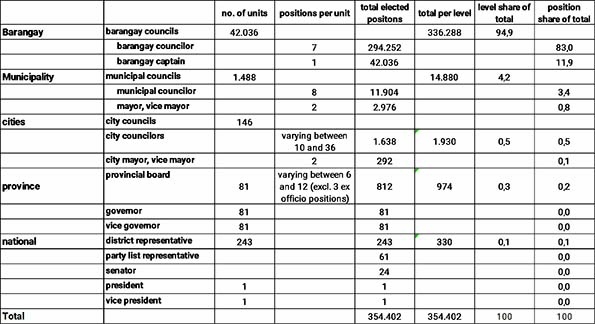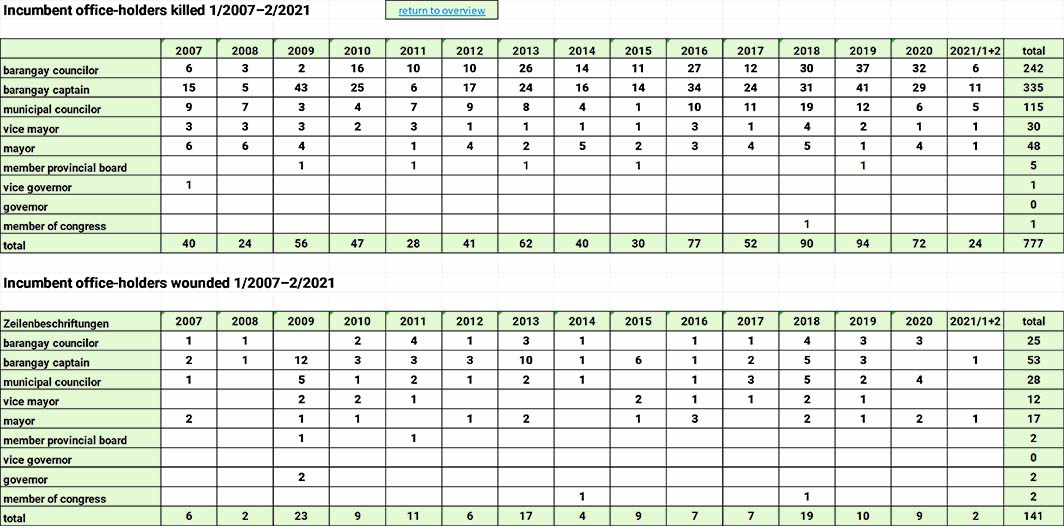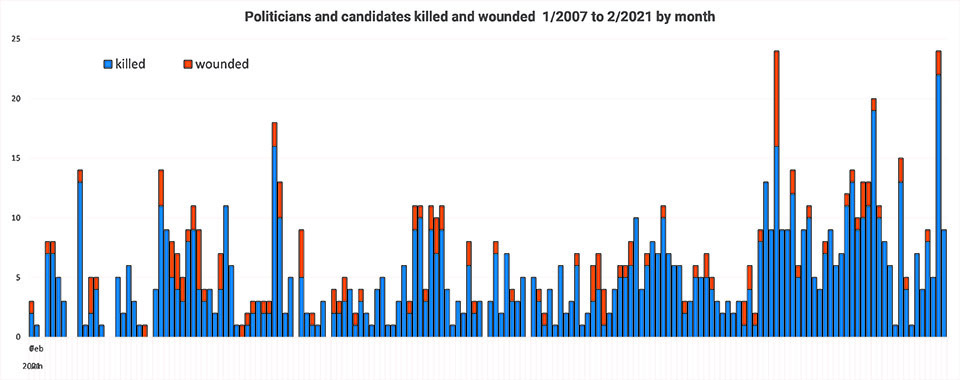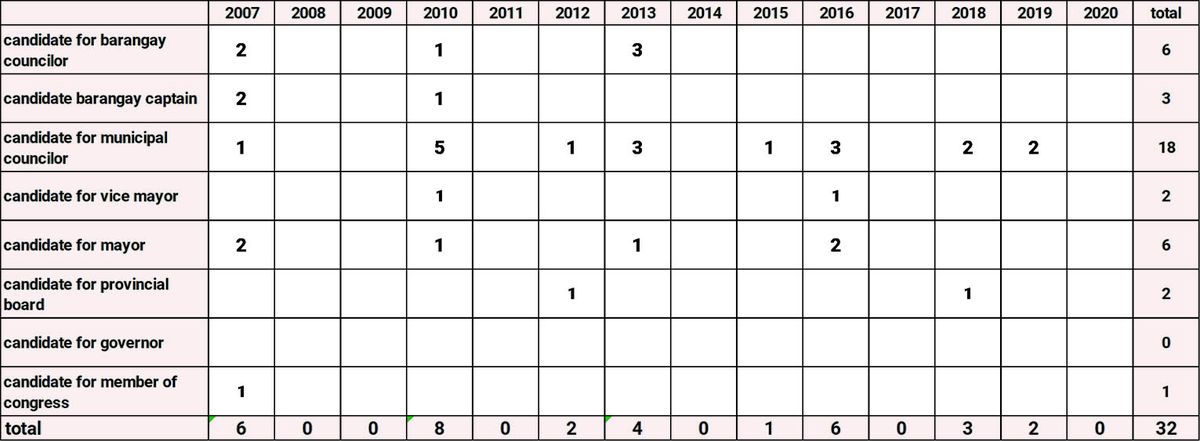Online Appendix to PRIF Report 02/2021
“If you can’t beat Them, Kill Them:” Fatal violence against politicians in the Philippines by Peter Kreuzer
The dataset informing the data presented in this appendix is still a work in progress. It does not present the definitive number of incidents or number of killed and wounded, but only a significant share. It is continuously updated and extended with additional searches using variation in search terms and strategies. However, the past few rounds have shown that the observable patterns remain stable, even though the magnitude of cases is still growing, albeit slowly.
Sources: Own dataset
1. Elective Positions in the Philippines 2018
These numbers are only approximations, as the number of Local Government Units is consistently growing slowly but steadily. This has the greatest impact at the barangay level, followed by the municipalities. The least change is found in the number of provinces. During the period from 2007 to the present, only one province, Davao Occidental, was added in 2013. In contrast, the number of barangays grew more significantly. In 2010, there were 42,025 barangays; in 2013, there were 42,028; in 2020, the number rose to 42,046. This analysis adopts the December 2017 figure of 42,036 (Philippine Statistics Authority 2018. 12 New Barangays Established in First Quarter of 2018. psa.gov.ph/content/12-new-barangays-established-first-quarter-2018).
4. Incumbent and former politicians killed per Local Government Unit 2007–2020
Note: This assessment is only an approximation, as the number of local government units is constantly increasing. This trend is most pronounced at the barangay level, but extends to the provincial level, where the province of Davao Occidental was created in 2013. Thus, in a number of provinces the number of elective positions has been lower in earlier years. Overall, the resulting deviation is extremely small and can be neglected for this calculation.
victim position: Barangay captain, barangay councilor, municipal councilor, vice mayor, mayor, member of provincial board, vice governor, governor, member of congress
6. Candidates killed 2007–2020
The low figures must be viewed with caution. They do not reflect the actual number of candidates who were murdered, but only the number of victims, who were named in the reports only by their candidate status. Incumbents running for re-election were usually characterized by their current position. This was adopted here. For incumbents running for higher office, this was handled the same way in the coding, although it can be argued that these individuals may have been targeted because they were no longer confined to their original place but were challenging other politicians for the higher position. This must be taken into account here, as well as the fact that it is generally less known whether a person is running in an election, so that the number of "unreported" cases of violence (i.e., the dark field) is likely to be greater here than for current officeholders.
8. Incumbent politicians unharmed 2007–2020
This figure presents the numbers of incumbents and candidates, who were perceived to have been the target of the assassination attempt but remained unharmed. This does not mean that there were no casualties only that the presumed target of the attack was neither killed nor injured. The fact is that in a number of such attacks, bystanders or companions became victims. Given that the target was not wounded, one may presume a relatively higher number of unreported cases (darkfield).








